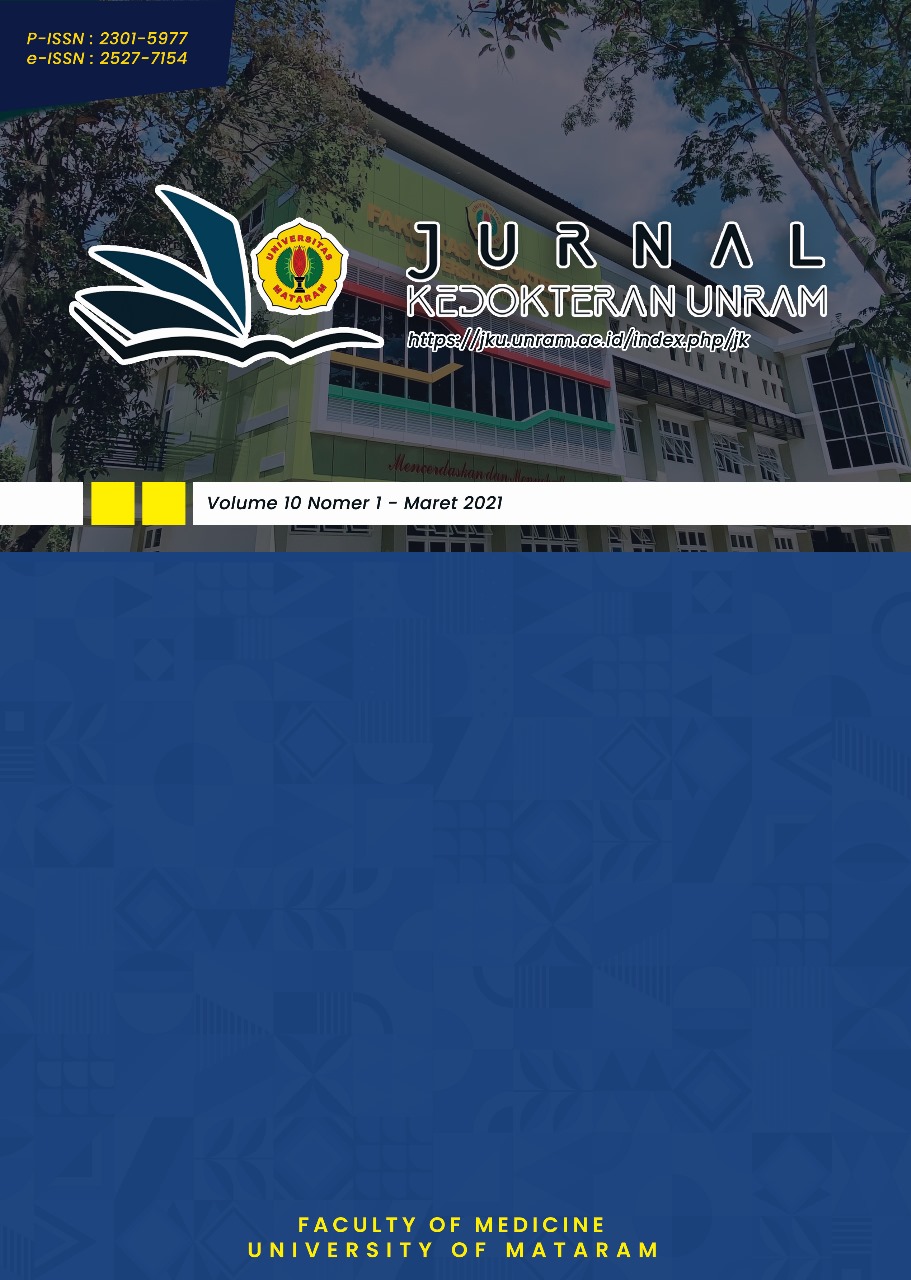Kanker Esofagus: A Literature Review
DOI:
https://doi.org/10.29303/jk.v13i4.5392Keywords:
kanker esofagus, karsinoma sel skuamosa, adenokarsinoma, diagnosis, tatalaksanaAbstract
As a malignancy with one of the highest fatality rate, esophageal cancer requires specific attention. The two etiologies of esophageal cancer which are squamous cell carcinoma and adenocarcinoma often does not show any specific symptoms in the early stage of the disease. However, as the disease progresses, patients can feel some clinical manifestations such as progressive dysphagia and unintentional weight loss. The process of establishing the diagnosis of esophageal cancer is carried out with a series of physical examinations and followed by endoscopy as the gold standard. However, due to the lack of specificity of the initial symptoms, diagnosis often only made when the cancer is already in an advanced stage which causes the cancer prognosis to be worse with a survival rate in 5 years of only around 20,9% and might cause some complications such as esophageal perforations, retropharyngeal abscesses, airway obstruction, and many other complications. Therefore, it is necessary to diagnose as early as possible through routine physical examinations to increase life expectancy and the effectiveness of the therapy. This literature review aims to further discuss the importance of establishing the diagnosis of esophageal cancer and the development of diagnostic instruments and means by searching the literature from various sources.
Downloads
Published
Issue
Section
License
Authors who publish with Unram Medical Journal, agree to the following terms:
- Authors retain copyright and grant the journal right of first publication with the work simultaneously licensed under a Creative Commons Attribution 4.0 International License (CC-BY License). This license allows authors to use all articles, data sets, graphics, and appendices in data mining applications, search engines, websites, blogs, and other platforms by providing an appropriate reference. The journal allows the author(s) to hold the copyright without restrictions and will retain publishing rights without restrictions.
- Authors are able to enter into separate, additional contractual arrangements for the non-exclusive distribution of the journal's published version of the work (e.g., post it to an institutional repository or publish it in a book), with an acknowledgment of its initial publication in University of Mataram's Journal of Medicine.
- Authors are permitted and encouraged to post their work online (e.g., in institutional repositories or on their website) prior to and during the submission process, as it can lead to productive exchanges, as well as earlier and greater citation of published work (See The Effect of Open Access).
- This journal is open access journal which means that all content is freely available without charge to users or / institution. Users are allowed to read, download, copy, distribute, print, search, or link to full text articles in this journal without asking prior permission from the publisher or author.







